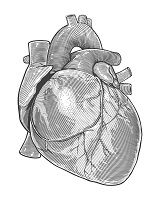Article
Study: Three Ablation Techniques Get Similar Results
Author(s):
When heart patients with paroxysmal atrial fibrillation do not respond to antiarrhythmic medications, physicians may turn to percutaneous catheter ablation. The unanswered treatment question has been how extensive that ablation should be. A new study indicates several techniques achieve the same results.

When heart patients with paroxysmal atrial fibrillation do not respond to antiarrhythmic medications, physicians may turn to percutaneous catheter ablation.
The unanswered treatment question has been how extensive that ablation should be. In a New England Journal of Medicine article researchers report on their findings.
To try to answer the question, researchers compared 3 approaches to ablation for persistent atrial fibrillation: ablation with pulmonary vein isolation alone, pulmonary vein isolation plus ablation of complex fractionated electrograms, and pulmonary vein isolation plus linear ablation.
In a trial called STAR AF Part 2 (which stands for the substrate and trigger ablation for reduction of atrial fibrillation) Atul Verma, MD of Southlake Regional Health Centre in Newmarket, ON, Canada and colleagues at St. Jude Medical recruited patients from 48 experienced cardiology procedure centers in 12 countries. Patients had to be at least 18, have symptomatic persistent atrial fibrillation (AF) refractory to at least 1 antiarrhythmic agent and to be undergoing ablation for the first time.
They were divided into 3 treatment groups.
When they were well enough to go home after the procedures they were given a trans-telphonic monitor for an 18-month follow-up and were asked to transmit rhythm recordings weekly and at any time they had symptoms.
The primary study outcome was that patients had no episodes of AF lasting more than 30 seconds after an ablation procedures, with or without the use of medications. At 18 months 25 of 61 patients who had the isolation procedure had an AF episode. So did 125 patients of 244 who had isolation plus electrogram, and 132 of 244 patients who had isolation plus lines.
Rates of the primary outcome did differ significantly among the 3 treatment groups.
“Our finds are not in accordance with the current guideline recommendation that patients with persist AF who undergo pulmonary-venin isolation should have additional substrate ablation to improve outcome,” the team said.
Pulmonary vein isolation alone can achieve a successful outcome in about half of patients, a rate that rises close to 60% after 2 procedures, the researchers said.
“We found no reduction in the rate of recurrent AF when either linear ablation or ablation of complex fractionated electrograms was performed in addition to pulmonary-vein isolation” they concluded.


